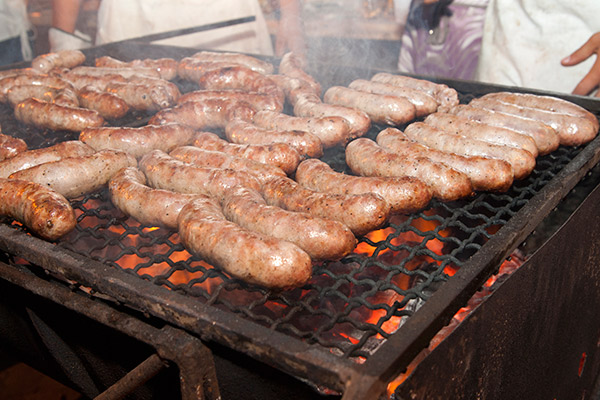Festivals in August, funny millennial rites
 The island of Ischia is a magical place, “en plein air for holidays”. Ready to welcome visitors and tourists of all kinds and nationalities with the desire to relax in what was the first Greek colony in the Mediterranean Sea.
The island of Ischia is a magical place, “en plein air for holidays”. Ready to welcome visitors and tourists of all kinds and nationalities with the desire to relax in what was the first Greek colony in the Mediterranean Sea.
It was the destination of exchanges and trade relations among its settlers and the Near East and Carthage, Greece and Spain, southern Etruria up to reach Puglia, Calabria and Sardinia. Whoever wants and desires, can dive into the signs of the past, attending museums like Villa Arbusto which houses Nestor’s Cup evoking Aphrodite; but above all can navigate through the traditions and walking along its furrows that still qualify plots and reveal the strong bond and the spirit of the island where time passes slowly, a dimension that comes spontaneously
from the “fountain of youth” of the island. The month of August is the best time to do it. This is the period that marks the fun and reaches its peak, rich in events in which one can bathe limbs, and lips, to make contact with the folklore, part of their fresh and vital lifeblood. And it is on this last point that many associations for the promotion and development of the area, the volunteers, the organizing committees of local events, often in close collaboration with government and parishes, spend much of their time to prepare privileged corridors to transform tourism into a medley of tastes, rites and holidays. The festival
(“sagra”, from the Latin adjective “sacred”) is a party where people offer the products of the land and local delicacies. Term, in turn, derived from the Latin
“party”, recalls the “sacred occasion”, the “long holiday”, the connection between the secular and the divine, between the “place”, physical place, and the “no
place”, transcendent. Before the festivals were celebrated in front of the temples, while the one used in the Christian Era was the space in front of churches,
the church square, from which the festival takes its name. They resemble in some aspects the “Bacchanalia”, ancient Roman festivals that welcomed background propitiatory rituals dedicated to Bacchus. The origin of these is probably the oldest and dates back to Ancient Greece and has strong roots in the areas of Campania and Basilicata. Orgiastic parties before, only later became “lucky charm” during the sowing and harvesting of crops. Today, as in the past, the similarity to the “Bacchanal” enlivens and involving the people of the area who come together in a symbolic place to practice celebration reminiscent of those in honor of migration from one season to the next, the transhumance of animals and men from one place to another. A place where interwoven human stories, personal and individual stories along with the vocation to gather around the local traditions, the flavors, the good food and agricultural products, perfumes, to thunderous laughter enhanced by wine produced by local farmers. All to promote and facilitate the flow of a climate that can overcome the time, the boundaries between people and remove all obstacles to the delivery in the dimension of “community”. The party thus becomes a varied and complex microcosm leading away from the sequence of the normal daily activities. In the cult of the food there is opposition to the schematic system in order to the relationship
with the environment, alternating in the landscape of memory to aspire to the re-appropriation of living space on a human scale. The “festivals” of Serrara Fontana, or those scattered in other areas of the island, tell a collective moment of community sharing where people recover spaces of sense where everyone “participates actively” to the party. In an embrace of flavors and smells, images and figures that stimulate sight, music that ferries the happy buzz of those who drink from the cup of Nestor to be overwhelmed by the desire of Aphrodite the beautiful crown. And much more…









